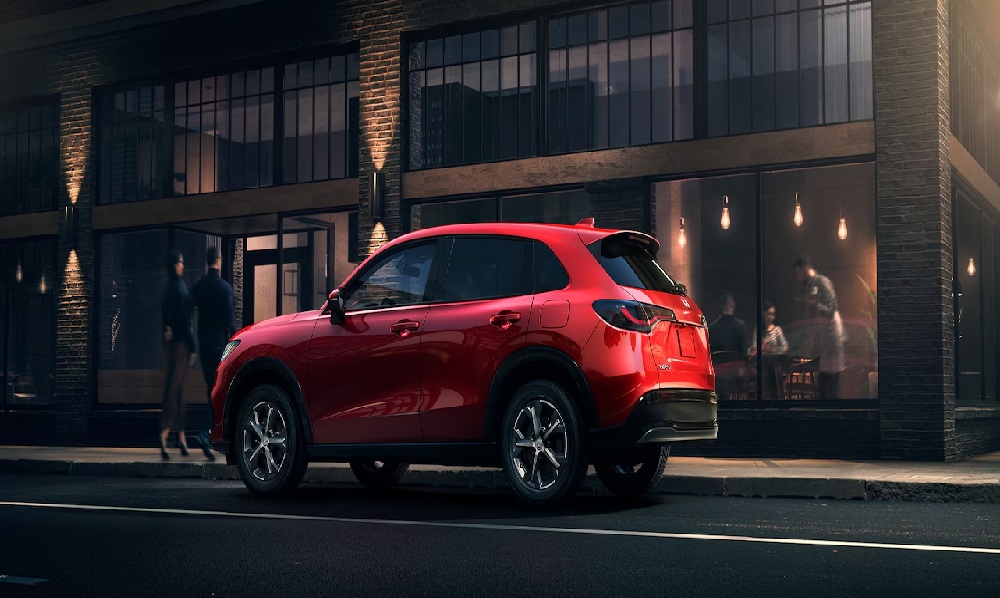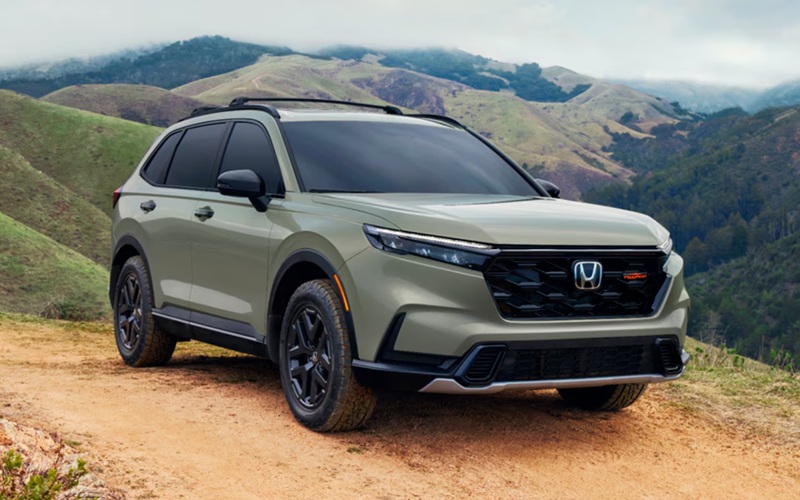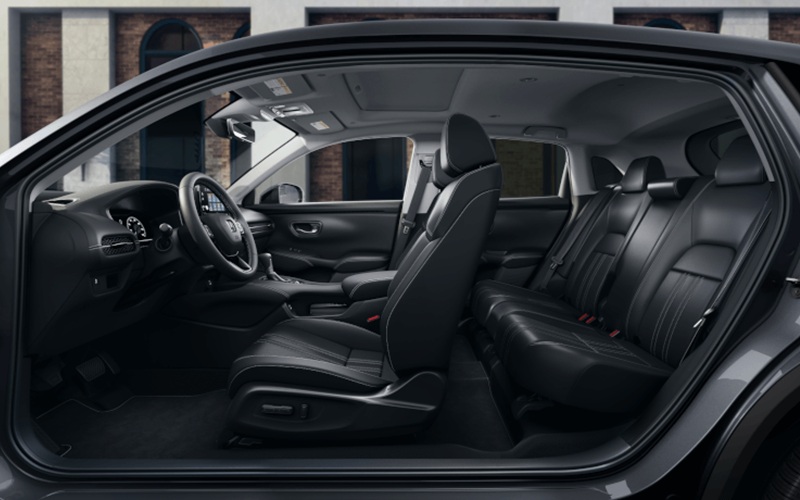The Honda HR-V continues to build upon the successful redesign introduced in the previous generation, offering a compelling blend of versatility, efficiency, and value in the competitive subcompact SUV segment. As with any vehicle, understanding specific technical specifications like the bolt pattern is essential for owners considering wheel customization, seasonal tire changes, or replacements.

What Are Bolt Patterns?
Before diving into the specific details of the HR-V, it’s important to understand what a bolt pattern is and why it matters. The bolt pattern (also called bolt circle or pitch circle diameter) refers to the arrangement of wheel lug holes on the vehicle’s hub. This specification is crucial because it determines which wheels will physically fit on your vehicle.
A bolt pattern uses two numbers:
- The first number indicates how many lug holes are present
- The second number represents the diameter of the imaginary circle formed by the centers of these lug holes, usually measured in millimeters
For example, a bolt pattern described as “5×114.3” means the wheel has 5 lug holes arranged in a circle with a diameter of 114.3 millimeters.
2025 Honda HR-V Bolt Pattern Specifications
The Honda HR-V maintains the same bolt pattern specifications across all trim levels, simplifying wheel compatibility considerations:
Bolt Pattern: 5×114.3mm (also sometimes referred to as 5×4.5 inches in imperial measurements)
This standardized 5×114.3mm pattern is consistent across the entire lineup, including:
- HR-V LX trim
- HR-V Sport trim
- HR-V EX-L trim
This bolt pattern specification is particularly noteworthy as it represents the continuation of the strategic alignment of wheel specifications across its lineup. The 5×114.3mm pattern is shared with numerous other Honda models, creating excellent interchangeability and aftermarket options.
Additional Wheel Specifications
While the bolt pattern is the most critical specification for wheel fitment, several other measurements are equally important to ensure proper installation and performance:
Center Bore
Center Bore: 64.1mm
The center bore is the hole in the middle of the wheel that centers it on the hub. The 64.1mm specification is consistent with many other Honda models. When selecting aftermarket wheels, those with larger center bores can be made compatible using hub-centric rings, which are simple adapters that fill the gap between the wheel and hub.
Lug Nut Thread Size
Thread Size: M12 x 1.5
This specification indicates that the lug nuts used on the HR-V have a 12mm diameter with threads spaced 1.5mm apart. Using the correct lug nuts with the proper thread pattern is crucial for safety and proper wheel installation.
Wheel Offset
Offset Range: +45mm to +55mm (depending on wheel width and trim level)
The offset of a wheel is the distance between the wheel’s mounting surface and the centerline of the wheel. The positive offset means the mounting surface is toward the front or outside face of the wheel. This specification influences how the wheel sits in the wheel well and affects clearance, handling, and appearance.
Factory Wheel Sizes
The HR-V offers different wheel sizes depending on the trim level:
- LX: 17-inch alloy wheels
- Sport: 18-inch alloy wheels
- EX-L: 17-inch alloy wheels with unique finish
All factory wheels adhere to the same 5×114.3mm bolt pattern regardless of size or design.
Comparison to Previous Generations
The current generation HR-V, which includes the model, maintains wheel specifications that differ from the first-generation model (2016-2022):
First Generation HR-V (2016-2022):
- Bolt Pattern: 4x100mm
- Center Bore: 56.1mm
- Typical Offset: +45mm
Current Generation HR-V (2023-2025):
- Bolt Pattern: 5×114.3mm
- Center Bore: 64.1mm
- Typical Offset: +45mm to +55mm
This change to a 5-lug pattern with the current generation represented a significant update, bringing the HR-V in line with most of the other contemporary Honda models. The move to a 5-lug configuration generally provides greater strength and stability, particularly important as the HR-V has grown in size and weight compared to its predecessor.
Compatibility with Other Honda Models
One of the advantages of the current bolt pattern is its compatibility with wheels from many other Honda vehicles. Models that share the same 5×114.3mm bolt pattern include:
- Honda Civic (2006-present)
- Honda Accord (2003-present)
- Honda CR-V (all generations)
- Honda Pilot
- Honda Odyssey
- Honda Ridgeline
This compatibility creates flexibility for owners who might want to temporarily use wheels from another Honda vehicle or purchase used OEM wheels from these models. However, it’s essential to verify other specifications, such as center bore, offset, and width, to ensure proper fitment beyond just the bolt pattern.
Aftermarket Wheel Considerations
When selecting aftermarket wheels for the HR-V, you should consider several factors:
Size Limitations
While the bolt pattern determines basic compatibility, size constraints are equally important:
- Minimum recommended diameter: 16 inches (to provide proper brake calliper clearance)
- Maximum practical diameter: 19 inches (beyond which ride quality and performance may be compromised)
- Width range: 6.5 to 8 inches (depending on tire selection and desired stance)
Offset Considerations
The factory offset of +45mm to +55mm is for optimal handling and clearance. Deviating significantly from this range can cause issues:
- Too low an offset (e.g., +35mm or lower): May cause wheels to stick out beyond the fenders, potentially causing rubbing against suspension components or fenders during compression or turning
- Too high an offset (e.g., +60mm or higher): May result in insufficient clearance between the wheel and internal suspension components
Most aftermarket wheels designed for the HR-V will fall within an acceptable offset range; however, verification is essential before making a purchase.
Weight Ratings
The HR-V requires wheels with appropriate load ratings to safely support the vehicle’s weight. The load rating of replacement wheels should meet or exceed that of the original equipment wheels.
Winter Wheel Packages
Many HR-V owners opt for dedicated winter wheels and tires, a popular choice for regions with significant snow and ice. When selecting winter wheel packages, several considerations apply:
Downsizing for Winter
A common practice is to downsize wheels by one inch for winter use. For example:
- HR-V Sport owners with 18-inch factory wheels might select 17-inch winter wheels
- HR-V LX or EX-L owners with 17-inch factory wheels might select 16-inch winter wheels
Downsizing provides several advantages:
- Allows for taller tire sidewalls, improving impact absorption on rough, frozen roads
- Typically reduces overall wheel and tire package cost
- Often provides better snow traction due to the narrower tire footprint that results
When downsizing, it’s essential to maintain an appropriate overall diameter (wheel + tire) to prevent speedometer inaccuracy and ABS/VSA system issues.
Steel vs. Alloy Winter Wheels
Winter wheel options typically include both steel and alloy choices:
Steel Wheels:
- More resistant to damage from winter road hazards
- Generally less expensive
- Heavier than comparable alloy wheels
- Often considered less aesthetically pleasing
Alloy Wheels:
- Lighter weight improves fuel efficiency and handling
- Better heat dissipation for brake components
- More aesthetically pleasing
- Generally more expensive
- Potentially more susceptible to damage from potholes and road salt
Both options maintain the same 5×114.3mm bolt pattern requirement.
TPMS Considerations
The HR-V features a Tire Pressure Monitoring System (TPMS) that utilizes sensors located inside each wheel to monitor tire pressure. When changing wheels, you must address these sensors:
Options for Handling TPMS:
- Transfer existing sensors: The original sensors can be removed from factory wheels and installed in new wheels, typically requiring professional service
- Purchase new sensors: You can install new compatible TPMS sensors in aftermarket or winter wheels
- Program sensors: After installation, new sensors must be programmed to communicate with the HR-V system, requiring either dealer service or specialized tools
The HR-V utilizes a direct TPMS system, which requires sensors in each wheel for proper function. Bypassing this system is not recommended and may trigger warning lights.
Proper Torque Specifications
Regardless of which wheels you install on the HR-V, proper installation using the correct torque specifications is critical for safety:
Lug Nut Torque Specification: 108 Nm (80 ft-lbs)
Over-tightening lug nuts can stretch fasteners, warp brake rotors, and damage wheels. Under-tightening creates safety risks, including potential wheel detachment. Always use a calibrated torque wrench and follow a star or cross pattern when tightening.
Wheel Locks and Security
Factory and aftermarket wheel locks are available for the HR-V, using the same M12 x 1.5 thread size. These locks replace one lug nut per wheel with a specially keyed version that requires a matching key tool for removal, providing security against wheel theft.
While convenient, it’s important to store the key tool in a location that’s accessible in the event of a flat tire but not immediately obvious to potential thieves.
Maintenance Best Practices
To ensure ongoing safety and performance, you should follow several maintenance practices:
- Regular torque checks: Verify lug nut torque after the first 50-100 kilometers following wheel installation and periodically thereafter
- Inspect for damage: Regularly examine wheels for cracks, severe bends, or corrosion that could compromise structural integrity
- Clean properly: Use appropriate wheel cleaners formulated for your specific wheel finish to prevent damage
- Rotation adherence: Follow the recommended Honda rotation pattern and intervals (approximately every 10,000 kilometers)
- Balance verification: Have wheels balanced any time you install tires or if vibrations develop
The Honda HR-V standardized 5×114.3mm bolt pattern provides owners with excellent flexibility for both OEM and aftermarket wheel options. By understanding all relevant specifications and following proper installation and maintenance procedures, HR-V owners can safely customize their vehicles while maintaining optimal performance and safety.
Questions and Answers About 2025 Honda HR-V Bolt Patterns
Can I use wheels from my previous generation HR-V (2016-2022) on my new model?
- No, you cannot use wheels from the previous generation on your new model. The first-generation used a 4x100mm bolt pattern, while the latest model uses a 5×114.3mm pattern. This fundamental difference in the number and arrangement of lug holes makes the wheels completely incompatible, regardless of their size or appearance.
What other Honda models have wheels that would fit my HR-V?
- Several Honda models share the 5×114.3mm bolt pattern used on the latest model, including the Civic (2006-present), Accord (2003-present), all generations of CR-V, Pilot, Odyssey, and Ridgeline. While the bolt pattern matches, you’ll still need to verify the compatibility of other specifications, such as center bore (64.1mm), offset (approximately +45mm to +55mm), and wheel width, to ensure proper fitment and clearance.
Do I need to use TPMS sensors if I purchase winter wheels for my HR-V?
- Yes, this SUV uses a direct Tire Pressure Monitoring System (TPMS) that requires sensors in each wheel. When installing winter wheels, you have several options: transfer your existing sensors (which requires professional dismounting/mounting), purchase new sensors specifically designed for your winter wheels, or, in some cases, use programmable universal sensors. Without functioning TPMS sensors, your vehicle will display a warning light on the dashboard and may affect certain vehicle systems that rely on tire pressure data.
What is the correct torque specification for the lug nuts on a Honda HR-V?
- The correct torque specification for the lug nuts is 108 Nm (80 ft-lbs). It’s critical to use a calibrated torque wrench when installing wheels and to tighten in a star or cross pattern for even pressure distribution. Both under-torquing and over-torquing can create serious safety issues—under-torqued nuts may loosen, while over-torqued nuts can stretch fasteners, damage threads, or warp brake rotors.
Can I install larger diameter wheels on my HR-V than what came from the factory?
- Yes, you can install larger diameter wheels within reasonable limits. While factory wheels range from 17 to 18 inches, depending on trim level, you can typically accommodate aftermarket wheels up to 19 inches with proper tire sizing. When upgrading the diameter, it’s essential to maintain an appropriate overall diameter (wheel + tire) by selecting lower-profile tires. Additionally, verify that the increased size doesn’t create clearance issues with suspension components or fenders during compression or turning. Always ensure that larger wheels maintain the correct bolt pattern (5×114.3mm), center bore (64.1mm), and a suitable offset.




